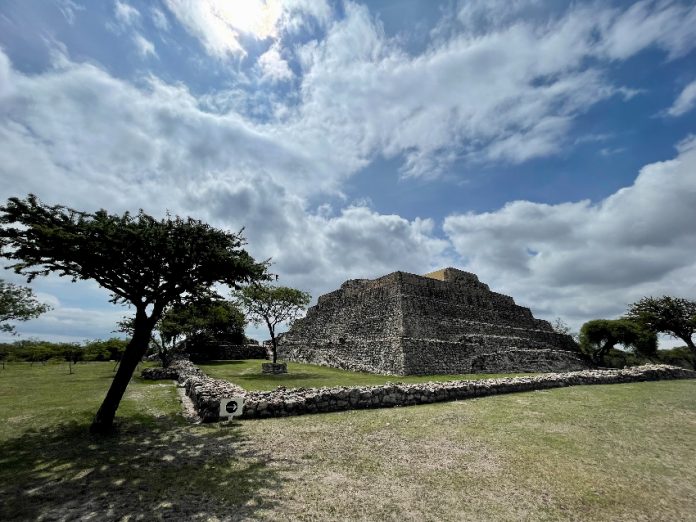Meet Mexico’s newest officially designated archaeological monument: Cañada de la Virgen, located near the iconic town of San Miguel de Allende in the state of Guanajuato.
The first archaeological zone to be declared a national monument by the National Institute of Anthropology and History (INAH) during López Obrador’s presidency so far, the site is more than 1,000 years old and researchers believe it served as an Otomí ceremonial center. The protection, granted by presidential decree, ensures that the site will protected from future residential or commercial development.
Archaeologists believe that what is known today as Cañada de la Virgen was most active from 600-900 B.C., long before the Mexica (also known as Aztecs) conquered the Otomí peoples who occupied the present-day states of Puebla, Guanajuato, and Hidalgo, in the 14th century.
A unique site situated on a symmetrical axis, it is oriented toward the sunrise in front, unusual when compared to similar sites in the area, and the moonrise in back. It was built in accordance with the sun’s daily path through the sky, and its temples are aligned with the heavenly bodies.

There are several major areas of Cañada de la Virgen: Complex A, called House of the 13 Skies, serves as an observatory; Complex B, the House of the Longest Night, references its connection to the Winter Solstice. Other areas include the House of the Wind and a 900-meter-long road, and still other areas of the site continue to be explored.
Cultural material found in the area indicates that priests lived on the site, and a wide variety of artifacts from other urban centers show evidence that it was an important stop along a long trade route.
Another notable feature is the site’s amanilli, a kind of reservoir that served to store water for the area. Also called a jagüey, it is evidence of the Otomí’s sophisticated hydraulic engineering system.
When archaeological work began at the site, only a point of a pyramid was visible; most of it was buried underground, and the excavation of Cañada de la Virgen took ten years. Luckily, work has been able to continue and has culminated in its designation as a protected monument despite widely criticized budget cuts for governmental entities dedicated to archaeological excavation and preservation.
With reports from El Universal and Reuters
